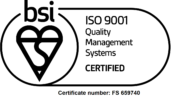We have answered all the frequently asked questions (FAQ) on Compression Therapy
FAQ
What is compression therapy?
Compression therapy is the application of pressure to the lower extremities in the management of chronic venous insufficiency and lymphoedema. Its main function is to counteract gravity and encourage venous and lymphatic return. Compression therapy can be achieved using bandages or compression stockings.
How does compression therapy work?
By applying a controlled pressure to the vein surface, compression stockings keep the vein diameter small and force blood back into the deep vein system which in turn pushes the blood up towards the heart.
What is graduated compression?
Graduated compression stockings have maximum compression at the ankle (100%) and the compression decreases upwards towards the heart.
Who should wear compression stockings?
• People with a variety of circulation problems, like leg ulcers, varicose veins, spider veins, aching legs
• Prevention of post-thrombotic syndrome after surgery
• People with lymphoedema
• People who stand all day at work
• Pregnant women
• Prevention of returning leg ulcer
• People who spend long stretches of time on planes or buses
What does mmHg mean?
The level of compression in stockings is described in mmHg. The higher the value of mmHg the higher the compression. A compression of 18-21mmHg means, if the stocking is fitted properly, there is between 18 and 21mmHg at the ankle, this decreases up the leg. If you have aching legs the amount of compression you need to relieve symptoms will be less than the mmHg needed to heal a leg ulcer.
What does RAL Standard stockings mean?
RAL is the German quality standard which basically guarantees that the amount of compression in mmHg indicated by the manufacturer corresponds to the amount applied by the stocking. The RAL standard has existed for 60 years and is the Gold Standard for quality control in the medical compression hosiery field.
What are the contraindications for compression therapy? Are there any situations in which compression stockings shouldn’t be worn?
Medical stockings are not indicated for use in the following situations:
• High grade arterial insufficiency
• Wet dermatosis
• Acute dermatitis
• Cutaneous infections
• Wearing during bed rest or confinement to bed if not prescribed by physician (except anti-embolism stockings)
• Metabolic oedema
• Uncontrolled congestive heart failure
• Intermittent claudication
• Ischemia
What’s the difference between anti-embolism stockings and graduated compression stockings?
Anti-embolism stockings are for bed bound patients who do not walk around. They are used on a temporary basis, for example, during and after operations to prevent deep vein thrombosis. They should not be used for mobile patients. Compression stockings, as seen above, have graduated compression, they help support the vein walls and work against gravity by encourage blood flow back towards the heart. Graduated compression socks are tighter around the ankle and can help improve circulation, reduce swelling and reduce the risk of DVT.
How long do the compression stockings last?
The Gloriamed stockings are RAL quality standard and the compression is guaranteed for 6 months, considering daily wear.
Why is it so important to get the right stocking?
A compression stocking is a class 1 medical device. The type of stocking you are prescribed, or choose to buy, depends on the disease you have (varicose veins, spider veins, lymphoedema, leg ulcer etc) and the size of your leg. Gloriamed stockings only give the indicated amount of compression therapy when the correct size is used. Gloriamed stockings come in 24 off-the-shelf sizes, if your legs don’t fit into any of these sizes then you may need to order a made to measure garment.
How do I choose between knee high and thigh high compression stockings?
Since you may be in compression stockings for life, it is important to find the style that is most comfortable for you. Generally speaking knee high are fine for people who have a healed leg ulcer. If you have swelling or varicose veins above the knee then thigh high are preferable.
How many hours a day should I wear compression stockings?
Compression stockings should be put on first thing in the morning and worn, if possible, all day, or at least while standing. They should be taken off at night.




